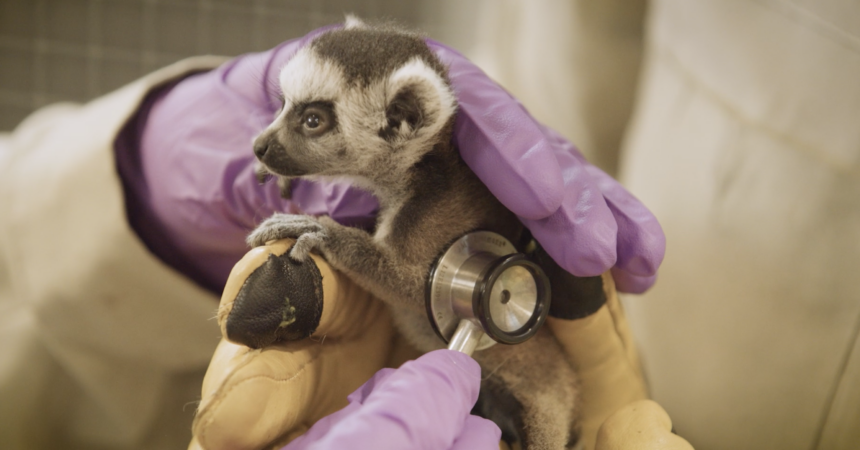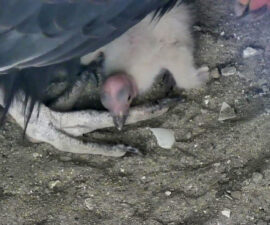Mother and Infants Thriving, Join Troop in Their Africa Rocks Madagascar Forest Habitat
The San Diego Zoo welcomed two endangered ring-tailed lemur infants when adult female Rosalita gave birth to twins July 8, 2020 at the Conrad Prebys Africa Rocks Madagascar Forest habitat.
Keeping with the Zoo’s high standard of care, veterinarians did a wellness check on the tiny infants earlier this week. The lemurs—one female and one male — who are yet to be named, are reported to be doing very well, nursing properly and gaining weight under the watchful eye of their doting mother.
“From the moment the twins were born, we knew Rosalita would be an excellent mom,” said Yeleny Smith, wildlife care specialist, San Diego Zoo. “She immediately exhibited all the appropriate behaviors of a lemur mom—being very attentive, grooming them, placing them in the appropriate nursing position, encouraging them to nurse and tending to their every need.” Smith added, “These births are significant, as they allow us to continue to learn and share knowledge about this endangered lemur species.”
The 13-day-old duo may be been seen clinging to their mothers’ belly as she moves about the lemur habitat, often nursing and then taking time to relax in the sun. The ring-tailed lemur troop has been very respectful and welcoming of the new additions. Their father, Armand, has been seen grooming Rosalita on occasion—and twin half-siblings Meva and Tsiky have been getting several sneak peeks of their future playmates. At about 3 to 4 weeks of age, the twins will gradually start to spend time riding on mom’s back; and when they are 3 to 4 months old, Rosalita will encourage the twins to explore and play on their own.
There are more than 100 species of lemurs—all native to the island of Madagascar, and all considered threatened or endangered. The ring-tailed lemur is among the most populous and easily recognized, with its big eyes, woolly fur and long black-and-white ringed tail. Ring-tailed lemurs are mostly active during the day. Unlike other lemurs, they spend more time on the ground than in trees. Ring-tailed lemurs are listed as Endangered on the International Union for Conservation of Nature (IUCN) Red List of Threatened Species, primarily due to habitat destruction. Lemur habitats are often destroyed or degraded through illegal logging and forest clearing for agriculture and mining.
Madagascar is a biodiversity hotspot and a popular location for ecotourism. When people travel to the island to see its distinctive and amazing wildlife, their visits help support local people and encourage local efforts to save the forests. Travel restrictions due to the COVID-19 pandemic has greatly affected ecotourism in Madagascar, leading to precarious economic situations, which could in turn have dire consequences for the country’s protected areas and threatened endemic species.
San Diego Zoo Global is a sponsoring member of the Madagascar Fauna Group, a conservation organization dedicated to working with the Malagasy people in local efforts to conserve their island’s plant and animal biodiversity. San Diego Zoo Global researchers have been working in Madagascar to survey remote forest sites for lemur species and to maintain and operate a field research camp, which helps to safeguard a biodiverse valley of primary forest in the northeast region of the country and train the next generation of local Malagasy conservationists. To help maintain San Diego Zoo Global’s mission-based programs that save species around the world, visit SanDiegoZoo.org/Donate or SDZSafariPark.org/Donate.
For more details on the San Diego Zoo and the San Diego Zoo Safari Park—now open with new safety and health protocols—including yearly membership options, important information for guests planning their next visit, go to SanDiegoZoo.org/Reopen.





